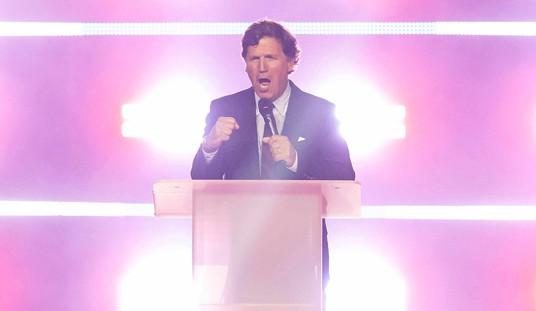The big news this week has obviously been President Donald Trump’s Asia trip, plus the sex scandals and accusations involving Roy Moore, Louis C.K., Brett Ratner, and the rest of Hollywood, but a major fight over tax reform is brewing in Congress. Both the House and Senate have released frameworks for the upcoming negotiations with votes expected in the House this week, and the Senate after Thanksgiving.
The biggest difference between the two bills is the House wants to reduce the tax brackets to five (including the standard deduction), while the Senate keeps things at the current seven. The House brackets are broken down like this: if you apply the standard deduction you pay no taxes ($12,200 for individual filers and $24,200 for joint filers), 12% (up to $45K for individuals and up to $90K), 25% ($90K for married couples filing together, and $45K for individuals), 35% for those individuals making over $200K while couples see that rate at $260K, and 39.6% for those making over $1M. The Senate version is 10% of taxable income for individuals making $19050, 12% for up to $77,400, 22.5% up to $120K, 32.5% for $290K, 35% for $390K, and 38.5% for $1M.
There are still major concerns over both plans with these tax rates. Politico’s Danny Vinik wrote there is essentially a bubble tax in the House version, which would end up costing some people in the 39.6% bracket to actually pay 46%:
The new rate stems from a provision in the bill intended to help the government recover, from the very wealthy, some of the benefits that lower-income taxpayers enjoy. Under the House GOP plan, all individuals—no matter whether they earn $35,000, $150,000 or $10 million—would pay the lowest rate, 12 percent, on their first $45,000 in taxable income. That’s a normal feature of current American tax law. But in the new plan, House Republicans want to claw back some of that benefit for individuals who earn more than $1 million, or couples earning more than $1.2 million.
Here’s how it would work: After the first $1 million in taxable income, the government would impose a 6 percent surcharge on every dollar earned, until it made up for the tax benefits that the rich receive from the low tax rate on that first $45,000. That surcharge remains until the government has clawed back the full $12,420, which would occur at about $1.2 million in taxable income. At that point, the surcharge disappears and the top tax rate drops back to 39.6 percent. This type of tax is sometimes called a “bubble tax,” because the marginal tax rate effectively bubbles up for a brief period before falling back to a lower level.
That’s…a problem. It’s bad enough the government tries to soak as much money as possible from all income groups, but a 46% tax rate is rather obscene. It’s easy to sit there and say the tax rate is going to hit actors, directors, big corporation executives, and professional athletes, but this rate would also hit small business owners who are using their own capital to fund their operations. These are also people who are paying their own mortgages, purchasing goods and services, and paying their own insurance costs whether it be health, auto, or home.
Forbes contributor Tony Nitti also criticized the House bill for how it handled some tax deductions, specifically ones involving medical expenses, moving costs, and student loan interest. Nitti’s opposition to the deductions makes sense because he’s a tax preparer, and stands to lose money if the tax code gets simpler. But it should be pointed out the House plan won’t hit taxpayers harder, if the deductions are eliminated and overall taxes reduced. Deductions should be eliminated because it favors one group over another, whether it’s a business group or individual group. The key thing to do is to lower taxes as those deductions are eliminated so everyone benefits.
The Senate version has its own problems including keeping the estate tax aka the death tax, and waiting a full year to reduce the corporate tax rate to 20%, whereas the House version repeals death tax and immediately cuts the corporate tax rates. There’s also a big fight going on regarding the child tax credit, and criticism from both Senators Marco Rubio and Mike Lee saying it doesn’t go far enough.
There are plenty of other things to quibble about with these tax proposals. I don’t think either of them go far enough in reducing the tax burden on all Americans. They also keep too many credits which favor one group over another. If I had to pick one plan over the other it’d be the House bill, even though it needs even more tweaking and streamlining to be improved.
But the biggest issue the Republicans have is their unwillingness, and inability, to cut taxes and spending. Michigan Congressman Justin Amash is right: conservatives would have gone nuts over this plan, were it done under the former administration. But, since a Republican is in the White House, the “ends justify the means.” Arizona Senator Jeff Flake also told colleagues there needed to be “tough decisions” on spending because the debt is $20T and the deficit is $600B per year. Democrats tend to freak out and falsely mewl this means the GOP will go after Medicare and Social Security first, but the facts are extremely different. Former Senator Tom Coburn constantly highlighted government waste, something Flake picked up. There are plenty of things in government which need to be cut, and neither party is willing to do it.
The Republicans cannot repeat the mistake of cutting taxes and increasing spending, even though it’s something they’ve done time and time again. Tax reform is fantastic, and I’m all for it. But there have to be spending cuts to go along with it. If not, we’re just repeating the mistakes of the past and dooming the future, when those debt markers get called in.








Join the conversation as a VIP Member